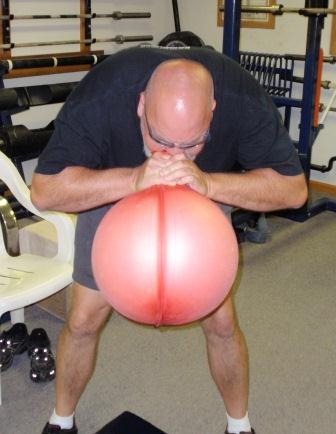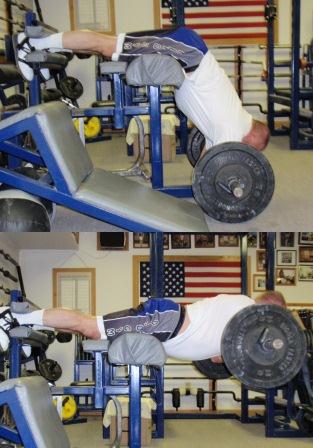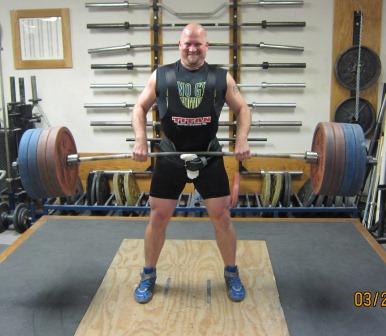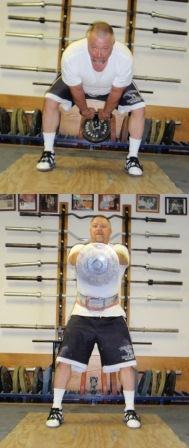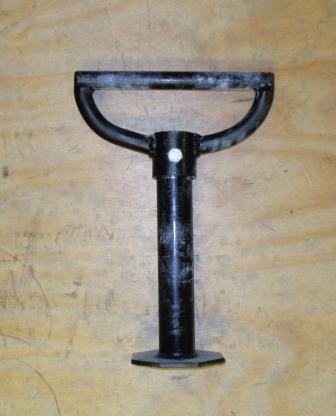Garage Days, Revisited
By Jarrod Fobes
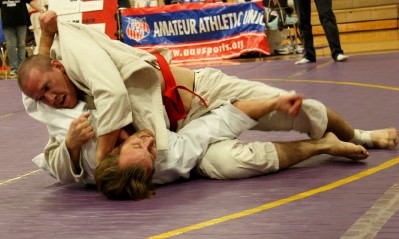
Jarrod Fobes in action winning the 2009 AAU Freestyle Judo National Championship in the 210 pound division.
Long ago, back in a dark, distant past called “the late 90’s” things were very different. Starbucks was called coffee. Everyone could buy a house. And there was virtually no grappling training to be had in Lawrence, Kansas. Brazilian jujitsu hadn’t made it’s way into every strip mall in America, and the few judo schools I had visited before the Welcome Mat did not convince that I would learn effective groundfighting skills there. For my small group of friends, this left one option: break a few bones over the years figuring it out ourselves.
Very often, we would train in a friend’s detached single car garage. It was made out of cinder blocks, and featured an obstacle course of broken out windows and rusted pipes sticking from the wall. But it did have a 10’x10′ wrestling mat, and sturdy rafters to hang a punching bag from. There was no electricity, so we would train by lantern light after dark. I remember in cooler weather, you could see the steam rising off of the two combatants wrestling on the mat while the others tried to learn by watching.
We didn’t have a coach. We had a vast library of tapes and books: BJJ, judo, wrestling, catch wrestling, vale tudo…anything we could find. If we thought somebody knew a thing about fighting, we would beg them to come in and work with us. A couple of notables were a collegiate wrestling national champion, and a Navy boxer. I learned a lot from both of these guys, but I can probably count the sessions I had with them on two hands. Of course, there were a ton of self-proclaimed experts who somehow never made it to the mat with us. Oh well.
Your partner was your best training tool, period. Lots of good coaches will tell you this. But when you have the luxury of a good coach, you also have the luxury of ignoring him. I can’t tell you how many techniques I learned after saying “I saw this on a UFC last night. Tell me if it hurts.” Then one of us would fumble and twist a limb around, seeking that tap out, while the helpful dummy would tell you if and where it hurt, what you could try to make it better, tighter, faster, etc. I don’t doubt that I would have progressed faster with a coach in those early days, but I did learn to think for myself. Self-coaching has it’s advantages too. I never had a coach tell me something wouldn’t work. Or that a technique was not correct for judo/bjj/wrestling etc. “Can’t” wasn’t a common word. The ultimate aim was truth in fighting. Our early group came from pretty diverse backgrounds. We had a decent powerlifter and wrestler who just liked to scrap. Another came from a ninjitsu background before starting video based bjj training. Me, I had started Tae Kwon Do years before. After six months or so of training, I got into a high school fight with a smaller wrestler, who gave me a painless but humiliating beating. After that I stayed in karate and TKD for lack of other options in western Kansas, but I picked the brain of every fighter and wrestler that would let me.
I wasn’t the best guy in the garage. But I was the one who stuck around. Some guys jumped ship to train bjj in Kansas City. Some just bowed out as injuries accumulated and real life began to impose. In time, my kickboxing coach Dwane Lewis graciously offered to let me throw some mats in his gym, and the Lawrence Grappling Club was born. LGC operated for about seven years, and I learned just as much from teaching as I ever did from training. Students will ask you anything, and you had better have an answer. I began training at the Welcome Mat to finally get some consistent (and excellent) coaching. Not only did I learn how to fight, but how to teach.
After the LGC had been up and running for a few years (and getting a small but tough reputation) a prospective student called. At the end of the call he said “well, thanks for your time. I just wanted to make sure this wasn’t run out of a garage or something.” I thanked him for his call and hung up.
Garage training isn’t for everybody. There’s no music piped in, no showers, and admittedly questionable hygiene. But you will not find sissies there. You will not find belt-chasers, or politics. Whatever their degree of skill, you will find tough men and women dedicated to pursuing fighting in a way most people never will. If that’s not what your after, be sure to call ahead and make sure the place isn’t run out of a garage.
